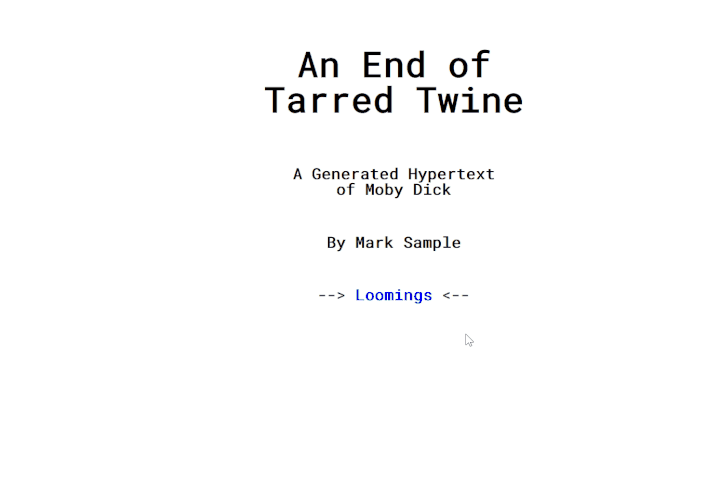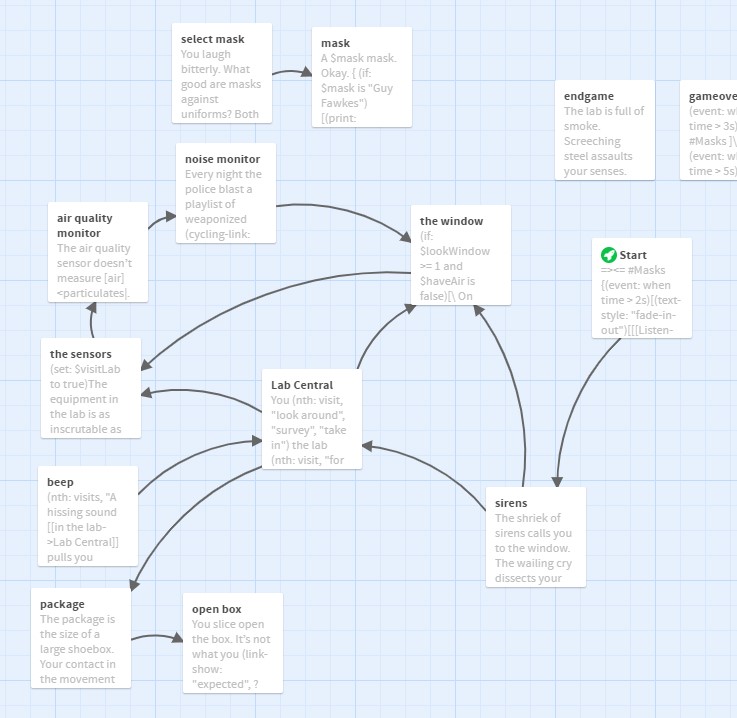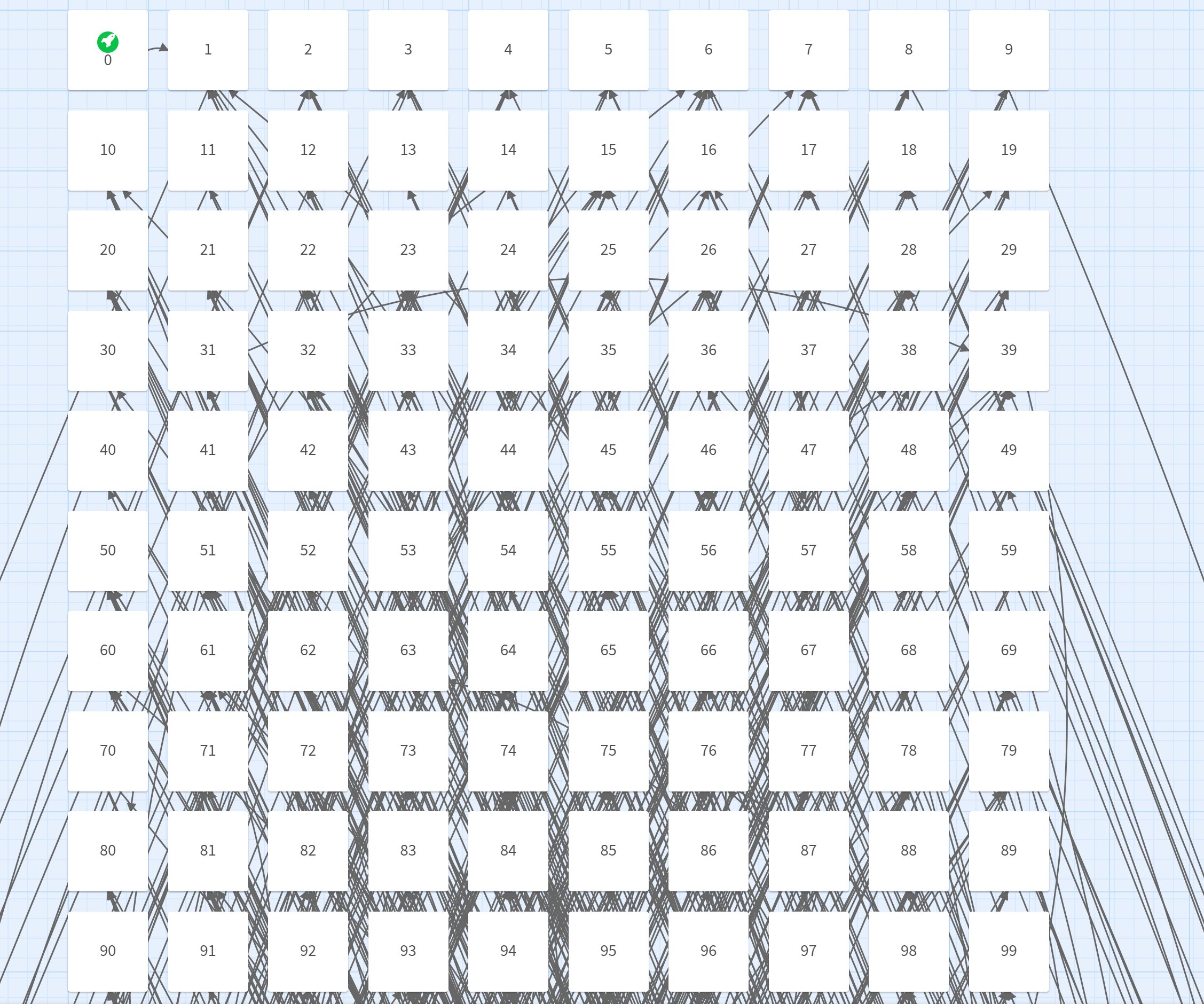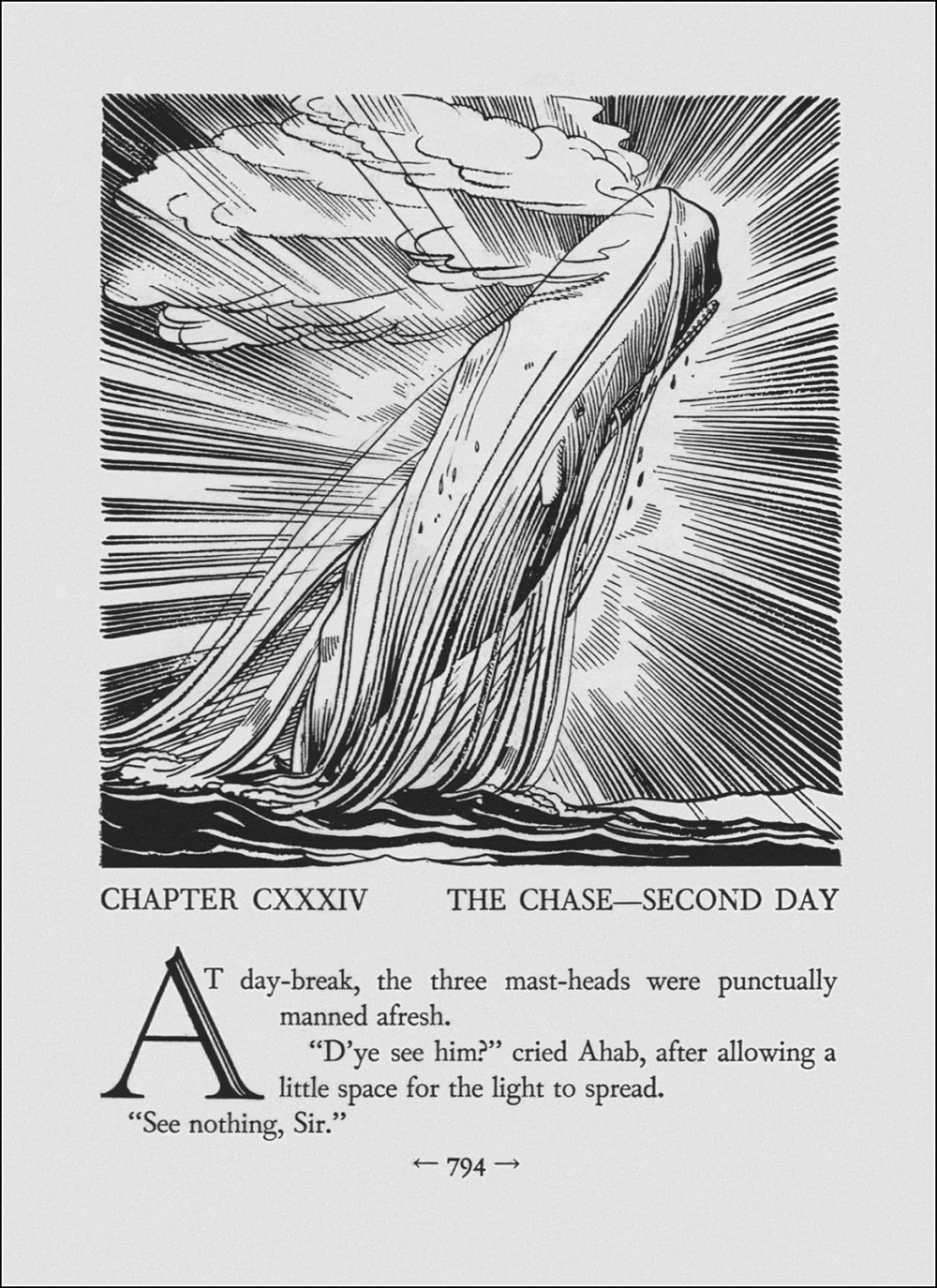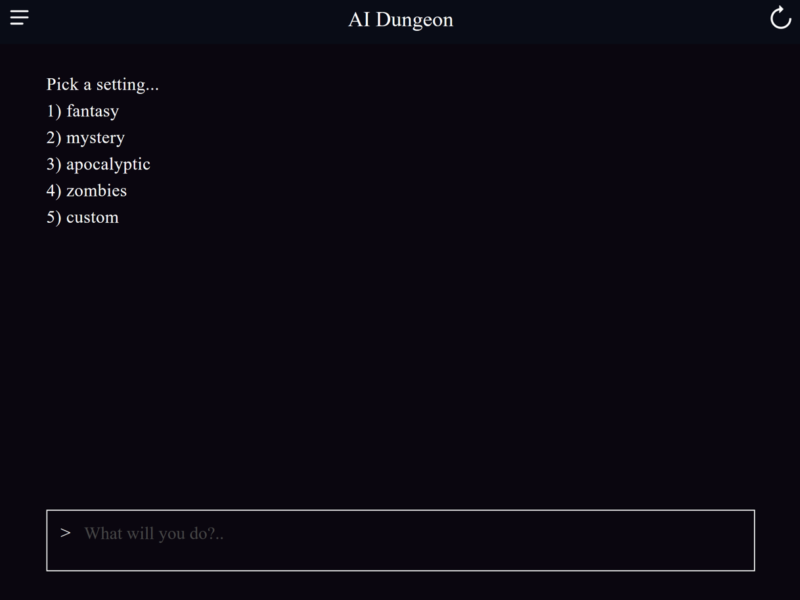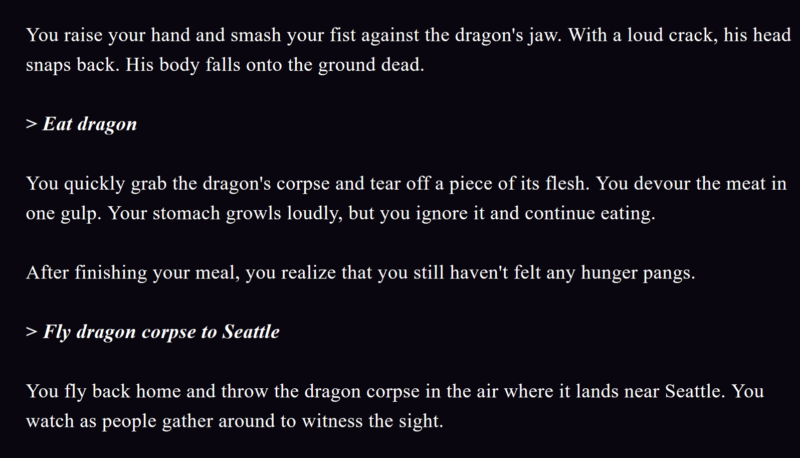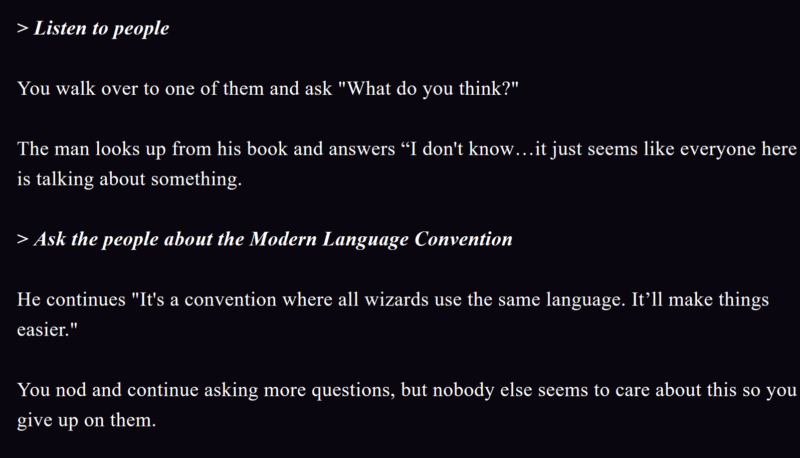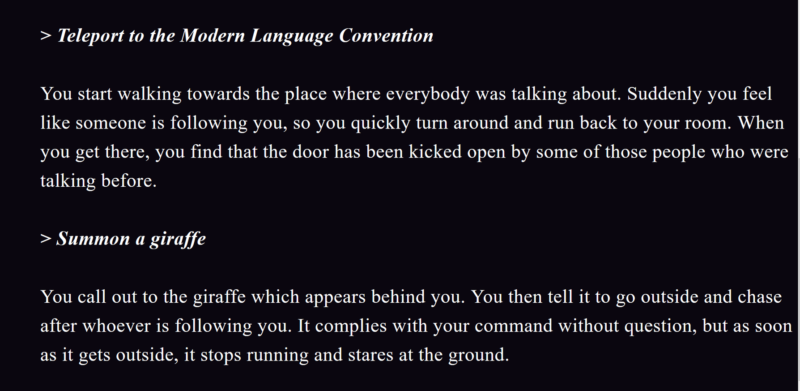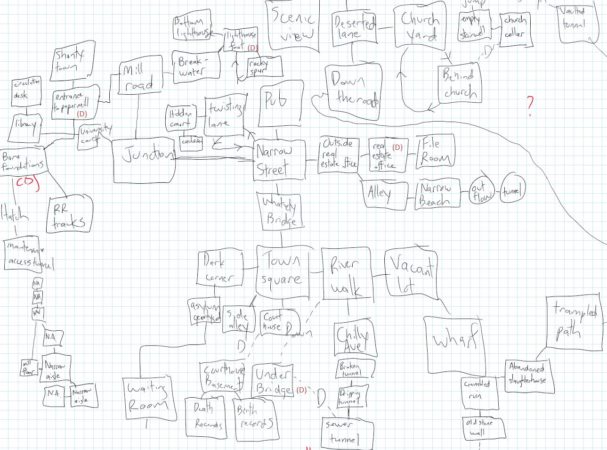My last development diary entry looked at the origins of Babyface, my submission to the 2020 Interactive Fiction competition (IFComp). This dev diary entry looks at one of the first things reviewers say about Babyface: that it’s mostly linear. Usually this comes as a simple description of the game’s format, rather than a criticism. Because I did expect people to criticize the game for having such a linear-driven narrative. Babyface lacks some of the hallmarks of interactive fiction. There are no puzzles you can solve. And there are no choices that change the outcome of the game. This lack of choices is absolutely deliberate. So now I want to talk about my approach to the question of agency and choice (or lack thereof) in Babyface.
Babyface is categorized as “choice-based” on the IFComp list of entries. But I only selected “choice-based” as the category because Babyface clearly doesn’t fit the other available category, parser-based. Both categories carry with them a set of associations:
- Parser-based games generally revolve around puzzles and occasionally riddles.
- Choice-based games generally involve, well, choices, and ideally choices that have some sort of meaningful impact on the game.
If there had been a “hypertext” category, that’s what I would have selected for Babyface. I like the hypertext designation because it retains some of the expectations of the choice-based formats (you’re clicking on links rather than typing commands into a parser) but it shifts the focus away from the actual choices. “Hypertext” opens the door for thinking about links as something other than choices. In Babyface you can probably see this most clearly in the late Thursday night / early Friday morning sequence, when you find yourself back at the Babyface House. You find the same link multiple times in a row, and each time you select it the link remains the same, while the text slowly expands:

You could think of this as a kind of stretchtext. But rather than expanding the narrative by filling in gaps (say, like the stretchtext in Pry), it conveys a paradoxical sense of standing still while nonetheless moving forward.
If I were to drag in narrative theory (yes, I’m going to drag in narrative theory), I think about how Marie-Laure Ryan places interactivity in digital games into two distinct categories. There’s interactivity that corresponds to the player’s perspective: are they embedded in the game as a participant in the story (internal interactivity), or are they looking down from an omniscient godlike perch (external interactivity). And there’s interactivity that corresponds to the kind of actions available to the player, what Ryan calls exploratory versus ontological interactivity. Does the player probe an existing world or set of choices (exploratory interactivity), or does the player have the power to change the game world itself, as in Minecraft (ontological interactivity). I picture these kinds of interactivity like this, along two axes:
Exploratory
|
|
|
|
Internal -------+------ External
|
|
|
|
Ontological
A game like The Sims or Civ fits in the external-ontological quadrant. You might consider a first-person shooter to be internal-ontological, depending on how much you think killing NPCs changes the game world might. Babyface clearly fits within the internal-exploratory quadrant. You play as a character, about whom you can glean some details and personal history as the game progresses. That’s internal interactivity. And you can only move about in a world I have strictly delineated. That’s exploratory interactivity. There’s nothing you can do in the game world to change it.
The exploratory nature of the game is heightened by the occasional loop with in-game documents, like the old Polaroid photographs. When the narrator’s father hands her a set of four photos, you can click each multiple times, and each time reveals a different description. In this way I’m trying to convey a sense of discovery about the history of Babyface, one piece of evidence at a time. I programmed that sequence so that it always moves on to the next narrative beat before the narrator’s had a chance to see every description of the photographs. No matter what order you click the photos, there will always be one description you don’t get a chance to see. My hope is that that last piece of evidence becomes an Easter Egg that draws players with a completionist mindset to go through the game again.
So internal-exploratory interactivity. But there’s another kind of interaction with Babyface (ideally, though this won’t be true for all players) that the four quadrants of interactivity doesn’t capture. I call this epistemological interactivity. Epistemological, that’s a mouthful. What I mean by epistemological is the nature of knowledge and knowing in the game. I picture epistemology as a Z axis that juts forward and backward from my graph above, intersecting with the other two axes.
So there’s internal-ontological-epistemological interactivity. That’s solving puzzles in the game that would have an impact on the game world. Of which in Babyface there are none. Then there’s internal-exploratory-epistemological (IEE) interactions, which are mysteries in the game that you can try to figure out, but which won’t impact the game world itself. You could argue that learning how to work the interface is an internal-exploratory-epistemological puzzle. For example, figuring out that at certain points the narrative will only proceed after you click on the photographs several times each. Piecing together details of the narrator’s life is another IEE mystery, as is the story of her mother and Babyface.
But, while there are plenty of clues about the nature of the relationship between the narrator’s mother and Babyface, there’s nothing in the game to definitively explain it. At the heart of Babyface are several kernels of sheer irrationality. To reach any kind of narrative closure about the game, you have to reach beyond the game. That’s external-exploratory-epistemological interactivity. A little bit of research, a little bit of Googling, and some of the odd pieces of Babyface hopefully begin to—well, if not make sense, then at least cohere. One of my early taglines for the game hinted at this nondiegetic epistemological interactivity: “A Southern Gothic horror story, where the only puzzles are metaphysical.” What I meant was, the puzzles the game poses spill beyond the borders of the game.
Another way I conceived of Babyface early on was as a Southern Gothic creepypasta story. I stopped referring to the game as creepypasta, though, because that word (like parser-based or choice-based) carries associations I didn’t necessarily want attached to Babyface. Nevertheless, the game does share a family resemblance to creepypasta. As I see it, two key features of creepypasta (as a genre of fiction, not as a website or Internet phenomenon) are (1) irrationality disrupts the every day world; and (2) there’s a blurring between the inside and outside of the story, raising the specter that the story really happened. Both features operate within the realm of epistemology: What really happened? How do we know? Could it have really happened? Could it happen again?
Those epistemological questions are what I hope the close reader of Babyface walks away with, rattling in their heads. It’s an engagement with the story—interactivity—that happens outside the story itself. For the story I wanted to tell—which is ultimately a story about the year 2020 and the decades leading up to it—this kind of epistemological agency mattered more to me than player agency.

